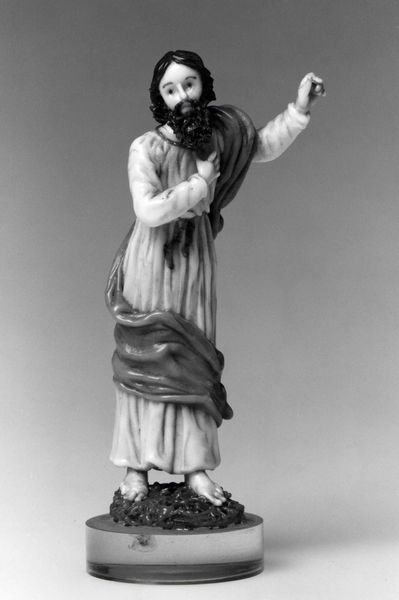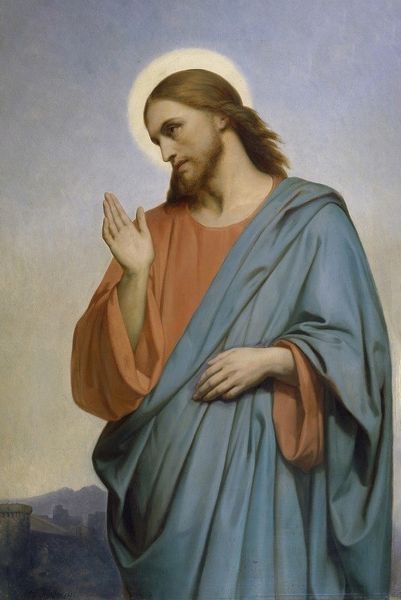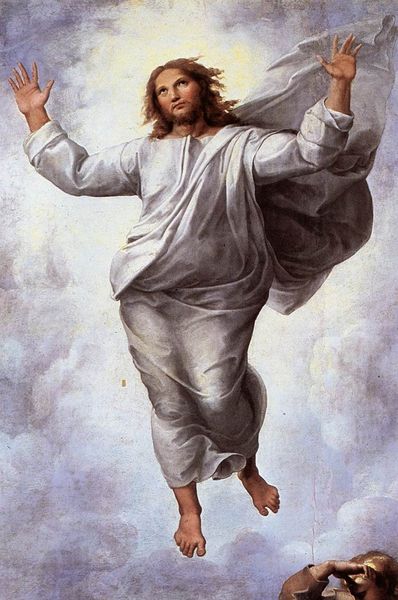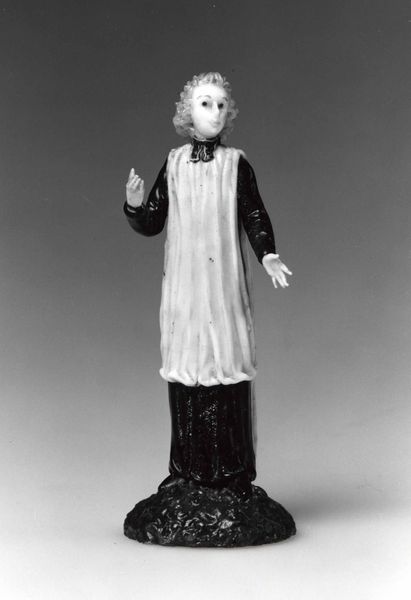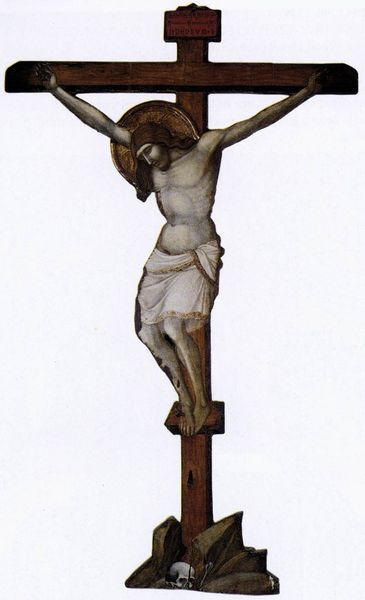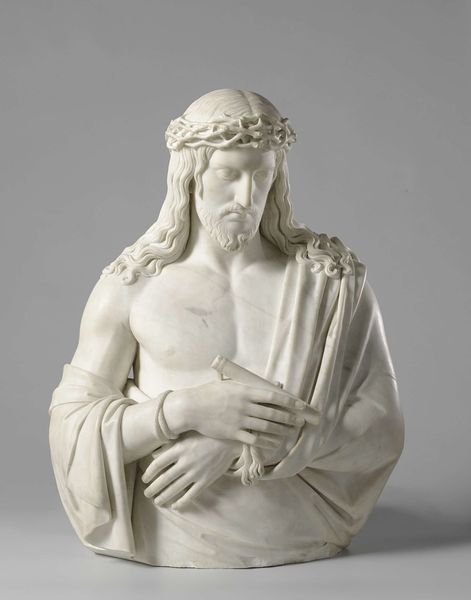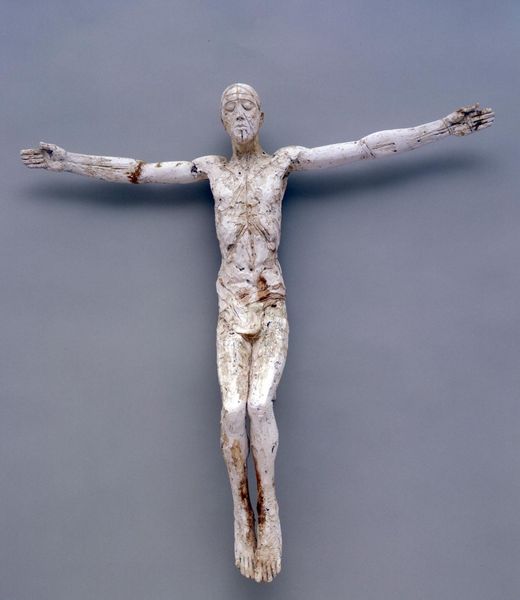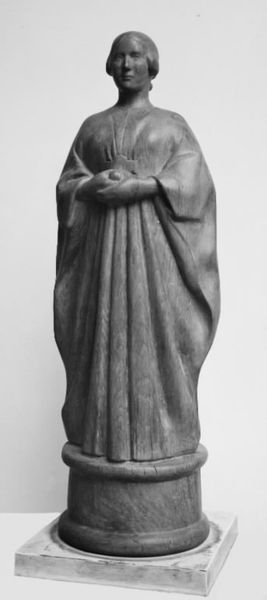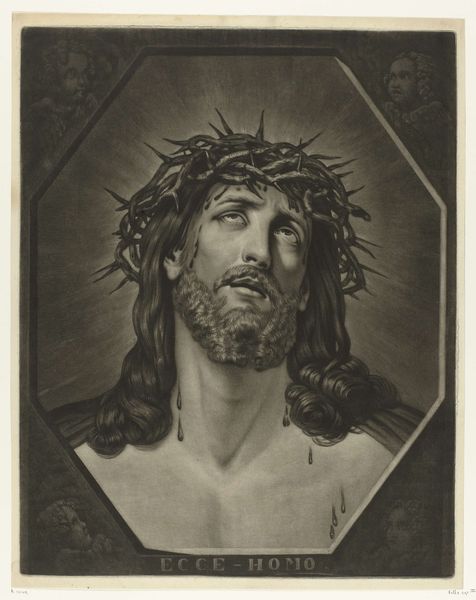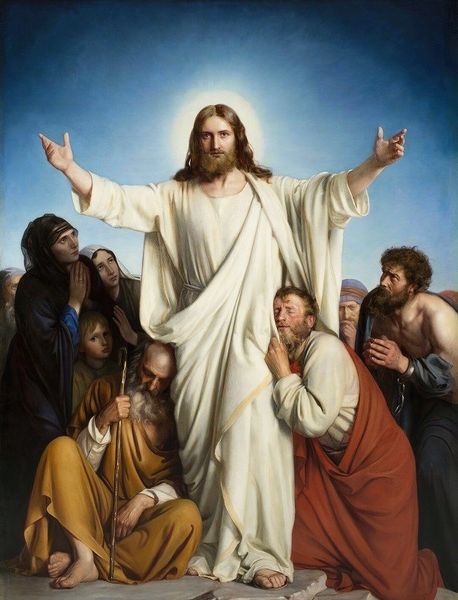
Dimensions: H 7.6 cm
Copyright: Public Domain
Editor: Here we have "Christ," a wood sculpture made sometime between 1740 and 1800 by the Haly workshop. There’s a starkness to it that's immediately arresting, almost melancholic. How do you interpret this work? Curator: What strikes me is how this sculpture reflects the political and religious anxieties of its time. The Baroque period, while known for its grandeur, was also a period of intense religious and political upheaval. Think about the colonial exploitation happening then and the challenges to religious authority, and consider if this piece offers a perspective on the state and future of the poor. What do you notice about Christ's posture and gaze? Editor: He doesn't seem triumphant, but almost burdened, maybe even pleading. One hand is outstretched and the other clutches a piece of cloth or maybe a bandage. Curator: Exactly! That gesture could be interpreted as offering comfort, or perhaps even begging for understanding, depending on your viewpoint. Consider also that the use of wood—a relatively common material—makes this figure accessible, reflecting the demographics of the communities that created and encountered the work. How does this simplicity complicate or support traditional ideas around depictions of power? Editor: That’s a really interesting perspective. The simplicity does democratize the image, making it less about divine untouchability and more about shared human experience. It speaks to me about solidarity, particularly in a time when faith was also about community and struggle. Curator: Precisely. It challenges us to examine who gets to represent whom, and for what purposes. Even now. What a remarkable, radical little sculpture. Editor: I agree; I definitely see it in a new light.
Comments
No comments
Be the first to comment and join the conversation on the ultimate creative platform.
